National
Nepal looks to India and China for lessons on containing the coronavirus
Although Nepal has yet to make an official request for support, it is currently studying what both countries are doing to restrict the spread of Covid-19, foreign minister says%20(8).JPG&w=900&height=601)
Anil Giri
As Nepal prepares for an eventual Covid-19 outbreak, it is looking towards both neighbours for best practices to contain the virus.
China, where the coronavirus originated, has officially offered help in the form of medical support and logistics should Nepal require it while India has pledged $10 million towards a fund that any South Asian nation will be able to make use to fight the virus.
Addressing a weekly media briefing in New Delhi, Raveesh Kumar, spokesperson for India’s Ministry of External Affairs, said that India has informally received a request from Nepal and the Maldives for a rapid response team with medical equipment to contain the possible outbreak of coronavirus.
Foreign Minister Pradeep Gyawali confirmed that Nepal has not yet sought any specific assistance from both neighbouring countries but was studying best practices.
“We have received offers from India and China but at this point of time, we have not made any formal request,” Gyawali told the Post. “We want to study the practices they have adopted to contain the pandemic. If we need any support, we will definitely ask them.”
India on Thursday said that the SAARC fund is already up and running and that it has received requests for assistance from some member states.
“Informal requests have been made by Nepal and the Maldives regarding rapid response teams and these [requests] are being processed,” said Kumar, at the weekly press briefing in New Delhi on Thursday.
According to officials, Foreign Secretary Shanker Das Bairagi held a meeting with Indian Ambassador Vinay Mohan Kwatra on Wednesday and put forth some of Nepal's immediate requirements, including the rapid response team and medical support from India to contain the possible outbreak of the coronavirus.
The Nepal government on Wednesday took a series of measures to control the spread of the virus, including banning all air passengers from entering the country and postponing nationwide exams. However, it is falling short of medical equipment and protective gear.
With the number of cases rising in India, officials in Kathmandu have been discussing ways to control the movement of people through Nepal-India border points.
India so far has reported three deaths and 180 infections.
At least two officials told the Post that both countries are discussing ways to seal the porous border completely for some time given the risk. The discussions, however, are in the preliminary stage, according to officials.
A meeting of the National Disaster Management Authority under the aegis of the Ministry of Home Affairs on Thursday concluded that Nepal faces a high risk of virus spread through the Nepal-India border and urged the government to take immediate measures to control it.
“There’s a threat of the virus entering via the open border. So we have decided to tighten the border as over 300,000 people have crossed the border in the last two weeks,” said Kedar Nath Sharma, spokesperson for the Home Ministry. “Nepal and India have already regulated some border points and restricted movement. Discussions on what measures can be taken to control the border in the wake of the Covid-19 pandemic are underway.”
An official who spoke on condition of anonymity said that Foreign Secretary Bairagi and Indian Ambassador Kwatra also discussed the possibility of shutting down the Nepal-India border for some time if the situation worsens.
Currently, only four border crossings are in operation between Nepal and India, but as the two countries share a roughly 1,800-km-long open border, completely halting the movement of people would be almost impossible.
According to Indian officials, medical teams are manning the border points that are in operation and are conducting thorough screenings of people crossing the border.
Kumar, the spokesperson for India’s Ministry of External Affairs, said there are currently no restrictions on people’s movement and no immediate plans for the same.
"It's an evolving situation and there won't be any behind-the-scenes decisions," Kumar said at Thursday’s press briefing. “If decisions are taken, they will be conveyed through advisories.”




 8.12°C Kathmandu
8.12°C Kathmandu
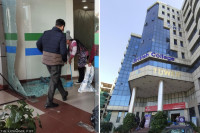
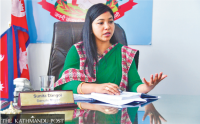
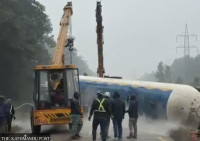





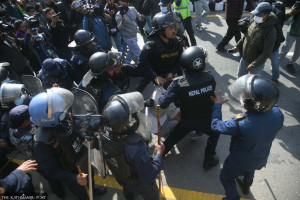
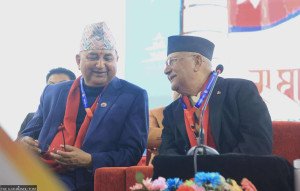



%20(1).jpg&w=300&height=200)

